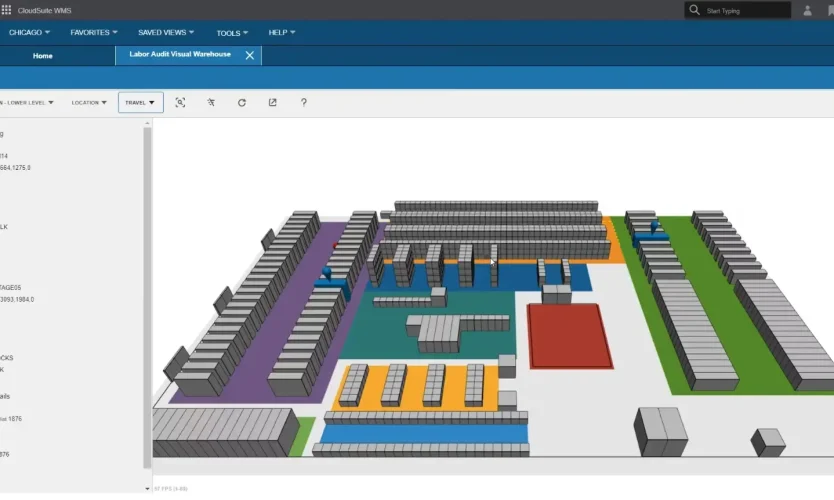Mastering Warehouse and Inventory Management with Modern Software
In today’s fast-paced business environment, managing inventory efficiently is no longer optional—it’s essential. Companies of all sizes face the challenge of maintaining accurate stock, optimizing warehouse operations, and ensuring seamless procurement. To overcome these challenges, businesses rely on warehouse management systems (WMS), inventory management software, and procurement software to streamline processes and maximize efficiency.
What is a Warehouse Management System?
A warehouse management system is a software solution designed to handle all warehouse operations, including stock receipt, storage, order fulfillment, and shipment. By providing a centralized platform, a WMS ensures that warehouse activities are organized, efficient, and cost-effective.
Key Features of a WMS:
- Real-time inventory tracking: Provides live updates on stock levels and product locations.
- Order management: Automates order processing to reduce human error.
- Labor management: Tracks employee performance and assigns tasks efficiently.
- Warehouse optimization: Uses algorithms to optimize space usage and product placement.
- Analytics and reporting: Generates insights into warehouse operations for informed decision-making.
Implementing a WMS not only enhances efficiency but also reduces operational costs and improves overall supply chain management.
Benefits of Warehouse Management Software
Modern warehouse management software offers far more than simple inventory tracking. It integrates multiple functions to ensure smooth, efficient operations. Some of the primary benefits include:
- Accuracy in Inventory
A WMS minimizes stock discrepancies, helping businesses maintain precise inventory levels and avoid issues like overstocking or stockouts. - Operational Efficiency
Automation of key warehouse tasks, such as picking and packing, reduces manual labor and speeds up processes. - Enhanced Customer Satisfaction
Faster, accurate order fulfillment ensures that customers receive their products on time, boosting loyalty and trust. - Cost Savings
By optimizing storage, labor, and workflow, WMS reduces unnecessary expenses and increases warehouse ROI. - Actionable Insights
Data-driven insights enable better forecasting, demand planning, and strategic decision-making.
Understanding Inventory Management Software
While a WMS focuses on warehouse operations, inventory management software covers the broader spectrum of inventory control across the supply chain. From procurement to sales, this software ensures products are available where and when they are needed.
Key Features of Inventory Management Software:
- Stock monitoring: Track quantities, locations, and movements of products.
- Reorder alerts: Receive notifications when stock falls below predetermined levels.
- Multi-channel integration: Sync inventory with e-commerce platforms, retail POS systems, and ERP software.
- Categorization and labeling: Organize products by SKU, category, or supplier.
- Reporting and forecasting: Predict future inventory needs to reduce waste and improve cash flow.
Using the best inventory management software improves accuracy, minimizes losses, and ensures efficient inventory flow throughout the business.
WMS vs Inventory Management System
Although closely related, a warehouse management system (WMS) and an inventory management system serve different purposes:
Many modern software solutions combine both WMS and inventory functionalities for a unified approach.
Selecting the Best Inventory Management Software
Choosing the best inventory management software depends on business needs and future growth. Consider these factors:
- Scalability
The software should grow with your business, handling multiple warehouses, users, and increasing inventory volumes. - Ease of Use
A simple interface ensures smooth adoption by staff without extensive training. - Integration
Your inventory system should integrate with existing ERP, accounting, POS, or e-commerce platforms. - Real-Time Visibility
Accurate, instant updates on inventory levels are crucial for timely decision-making. - Cost-Effectiveness
Evaluate total cost of ownership, including implementation, subscription, maintenance, and support. - Support and Updates
Reliable vendor support and regular updates help your software remain functional and secure.
Procurement Software: Streamlining Stock Acquisition
Procurement software complements inventory and warehouse management systems by automating purchasing processes and supplier management. This ensures the business always maintains the right stock levels.
Benefits of Procurement Software:
- Supplier database: Centralized information on vendors, contracts, and past performance.
- Automated purchase orders: Reduce manual errors by generating orders automatically when stock is low.
- Cost management: Track and optimize spending on goods and materials.
- Approval workflows: Control purchases with predefined authorization processes.
- Analytics and reporting: Gain insights into procurement trends for smarter decision-making.
Integrating procurement software with WMS and inventory systems ensures that businesses never run out of stock and maintain a smooth supply chain.
Modern Trends in Warehouse and Inventory Management
The industry is evolving rapidly with technology-driven trends:
- Cloud-Based Solutions
Cloud WMS and inventory software provide real-time access, scalability, and reduced IT overhead. - Automation and Robotics
Automated picking systems, robotics, and conveyor belts reduce human error and accelerate operations. - AI and Predictive Analytics
Artificial intelligence helps forecast demand, optimize stock levels, and improve warehouse efficiency. - Mobile-Enabled Systems
Mobile apps and handheld scanners allow employees to update inventory and track stock from anywhere in the warehouse. - Sustainable Warehousing
Software that optimizes space and reduces waste contributes to environmentally friendly operations.
Steps to Implement a WMS and Inventory Management Software
Successful implementation requires careful planning:
- Assess Requirements
Identify current pain points in warehouse operations, inventory management, and procurement. - Choose the Right Software
Select software that aligns with your business size, industry, and long-term goals. - Data Migration
Ensure that all existing inventory and supplier data is accurately transferred to the new system. - Team Training
Provide thorough training for warehouse staff, procurement teams, and managers to ensure smooth adoption. - Continuous Improvement
Regularly monitor performance, gather feedback, and optimize processes to maximize software benefits.
Key Advantages of Integrating WMS, Inventory, and Procurement Software
By integrating warehouse management software, inventory management software, and procurement software, businesses can:
- Maintain accurate stock levels across multiple locations.
- Reduce operational costs through automation and optimized workflows.
- Improve customer satisfaction with faster and error-free order fulfillment.
- Make informed, data-driven decisions to enhance supply chain efficiency.
- Streamline procurement and supplier management to prevent stock shortages.
Conclusion
Investing in a warehouse management system, inventory management software, and procurement software is no longer optional for modern businesses—it’s essential. These tools provide end-to-end visibility, improve operational efficiency, and ensure accurate stock management.
Selecting the best inventory management software tailored to your business needs can significantly enhance warehouse performance, reduce costs, and improve customer satisfaction. By integrating WMS, inventory, and procurement solutions, companies gain a competitive edge in managing their supply chain efficiently.
With technology evolving rapidly, businesses that adopt these solutions today are better prepared to meet customer expectations, reduce errors, and scale efficiently in the future.














